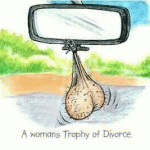DEMAND AS BIG A WEDDING PARTY AS YOU CAN GET. YOUR PREHISTORIC ANCESTRAL MUMS DID AND THE INVITED GUESTS NUMBERED AS MANY AS THE GRASS IN THE FIELDS.
Marriage, also called matrimony or wedlock, is a socially or ritually recognized union or legal contract between spouses that establishes rights and obligations between them, between them and their children, and between them and their in-laws. The definition of marriage varies according to different cultures, but it is principally an institution in which interpersonal relationships, usually sexual, are acknowledged. In some cultures, marriage is recommended or considered to be compulsory before pursuing any sexual activity. When defined broadly, marriage is considered a cultural universal.
So far so good, but it would be accurate to say “an ancient cultural universal”. We believe in etymology because people lie but words don’t lie. Even the word “lie” doesn’t claim to be anything but a lie and it’s up to people to use it and up to other people to make sure they are not lied to.
So what is the origin of “marriage”?
From around the year 1300, “action of marrying, entry into wedlock;” also “state or condition of being husband and wife, matrimony, wedlock;” from Old French mariage “marriage; dowry” (12c.), from Vulgar Latin *maritaticum (11c.), from Latin maritatus, past participle of maritatre “to wed, marry, give in marriage” (see marry (v.). The Vulgar Latin word also is the source of Italian maritaggio, Spanish maridaje.
So we are back to the earliest word developed by Udites in southern Arabia in prehistoric times and appear to have been borrowed by dozens of nations.
Etymological identification is easy – look for the root and remove the rest. The extensions are: matrimony, marriage, maritaticum, maritatus, maritatre, maritaggio, maridaje, etc. The specific trilateral extension is “mar” found in all of these words the bilateral root of which is “ar” also found in all the above words but originally with a short ‘a’ or hamza *ʼR. The full linguistic structure is this: (✤*ʼR⇆*Rʼ). The extension “mar” has this formula: m+*ʼR = mar.
In Arabic and Maltese ‘mara’ is “woman” but the feminine gender letter is ‘t’ = ‘fata’ “young man”, ‘fatat’ “young man”; ‘bn’ “son, boy”, ‘bnt’ “daughter, girl”.
It looks joining boys and a girl in marriage has been a great occasion since prehistoric times. Of course it all depends on financials, but the Akkadian word for ‘marriage’ is:
Ḫašaddu, aššūtu: [Human → Family] wedding, marriage, matrimony.
How big the party?
Ḫašaddu > ḫaš > “grass”, or as many as “grass” and stacked the same way. The other word (aššūtu) is also very ancient and all those who have been following our etymology posts should remember it – *ʻiš “bird nest” but also the pussy, clan and number ten (*ʻišr > clan, number 10) a huge number in prehistoric times. However, because “grass” is presented as a synonym it is possible the root is *ʼš “trees, bamboo fields, branches”. As we are at, the Akkadian išaru is “penis (man, dog …) [appi išaru] : glans penis”. Simply put, it is “a stick”. However, because sticks can be used to indicate to things they make ‘ishara’ “signs to, indicators to things”. Hindi ‘ishara’ is from it but so is Akkadian, Arabic, etc.
The ancient Arabian word for wedding is *ʻRs. The root is *ʻR. How big the party? As many as all Arabs, for this the root of the word ‘Arab’ (*ʻR+b).
From the root *ʻRa ‘*ʻRaous’ (aroos) “bride”; ‘*ʻRaees’ (arees) “bridegroom”.
Weddings vary from culture to culture but we want to listen to what roots are telling us.
The root *ḤF has a number of meanings with specifier extensions:
‘*ḤFl’ “party”.
‘*ḤF*ḤF’ (hafhaf) (this is a double root, a structure that followed the long era of the roots) “eliminate, beautify by removing something”. The bride’s excess hair is removed with the help of relatives, usually sitting in the middle of a circle lest she runs away. All brides appear to have survived the “skinning” but come out looking a bit like the inside of a boiled egg.
‘*maḤFa’ “palanquin; sedan; sedan chair; stretcher; handbarrow; litter”. The bride is carried on any of these then seated on a dais (*NṢ > mi*NaṢa). On occasions, she may be carried on a horse, camel, etc. prepared for the occasion.
The celebration accompanying the transport of both the bride and bride groom is from the root *ZF, hence ‘*ZF*ZF’ “wedding” but note this is also is a double root indicating it is very ancient or probably 10,000 years+. ‘*ZFr’ is “to breath out”, so it involves taking the bride/bridegroom from a certain location, her home and his home, to the wedding location.
To describe what happens in ”*ZFf’ or ‘*ZFfa’ look for the very popular saying in Arabic “like the deaf in the *ZFfa”. Meaning he/her doesn’t know what’s going on around him/her because the singing, shouting, hailing, drumming is deafening.
Not much has changed, has it?
(Visited 22 times, 1 visits today)
Last modified: August 28, 2017



